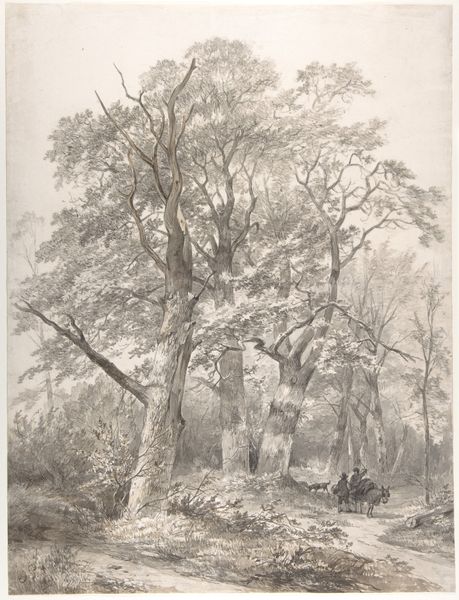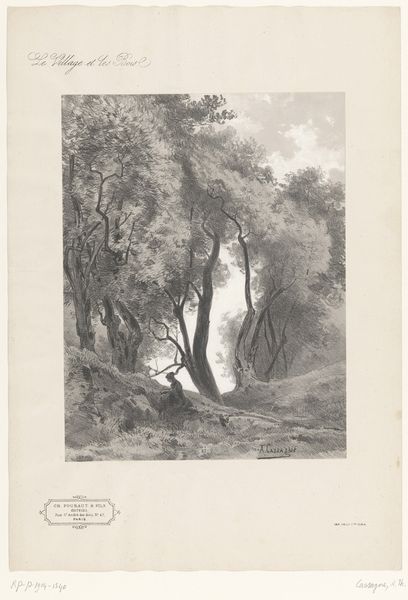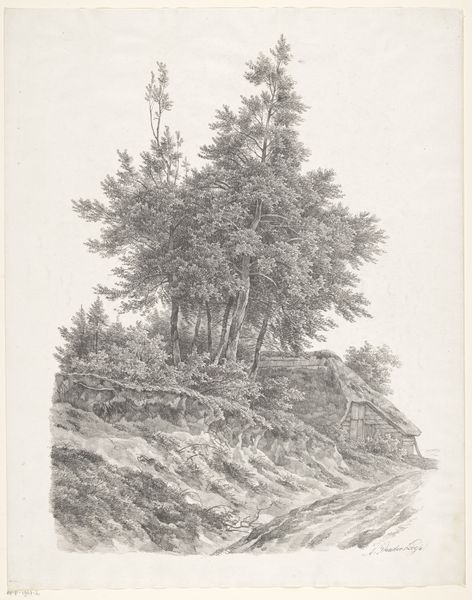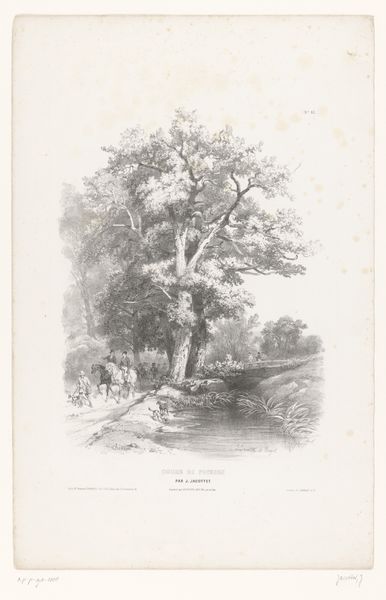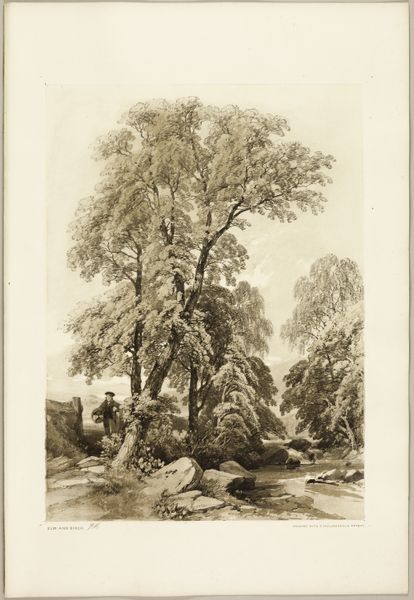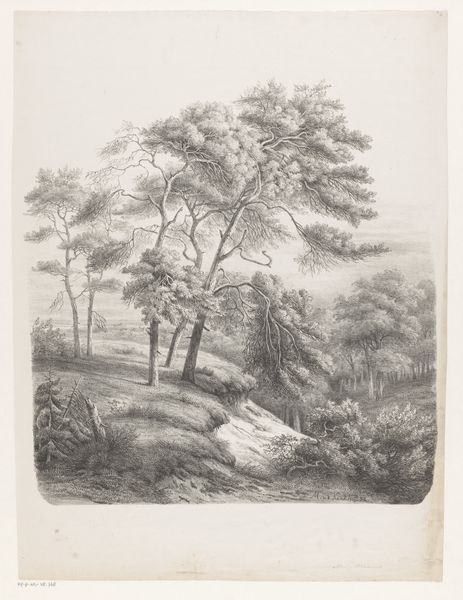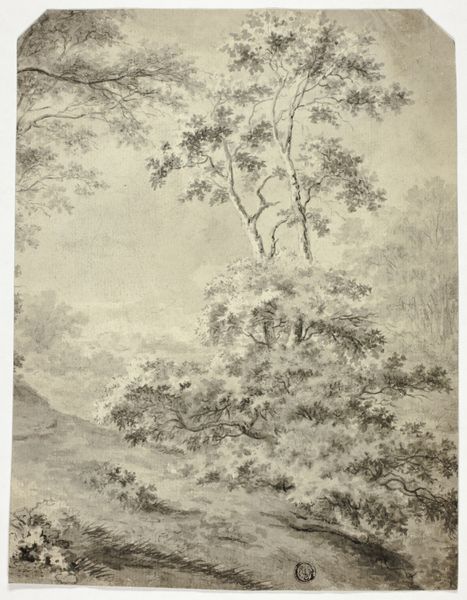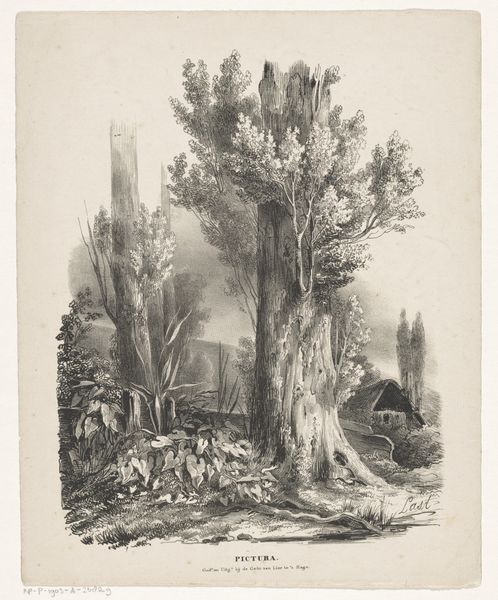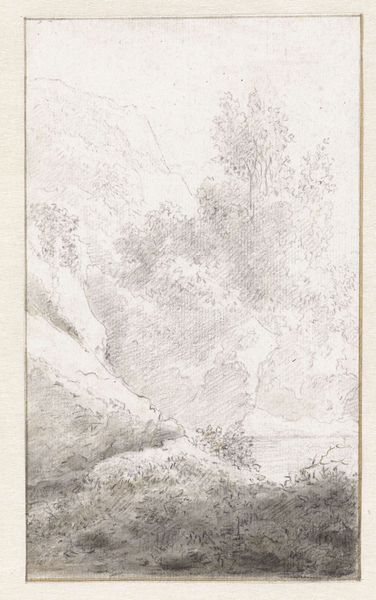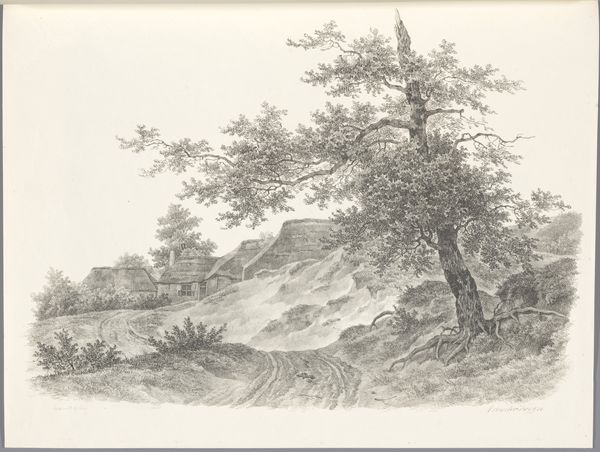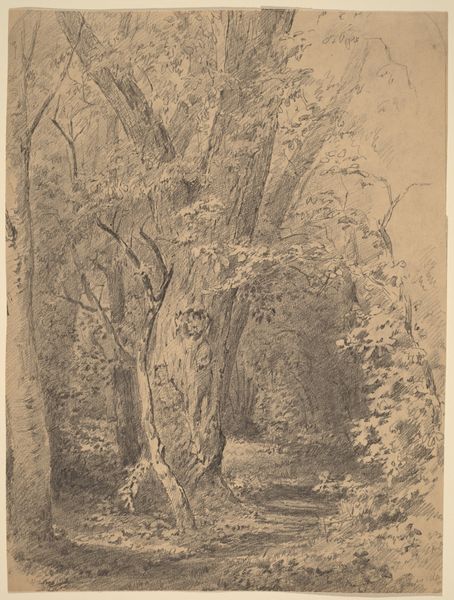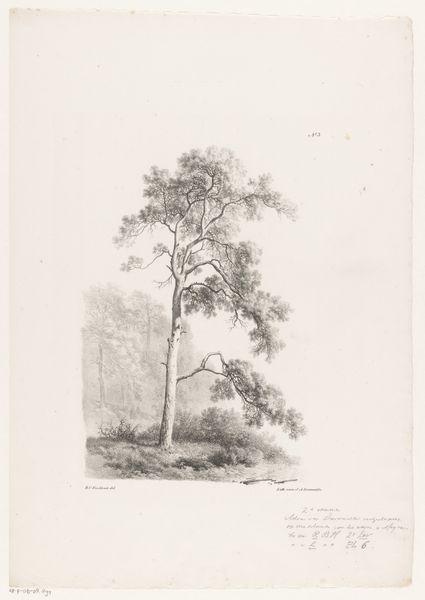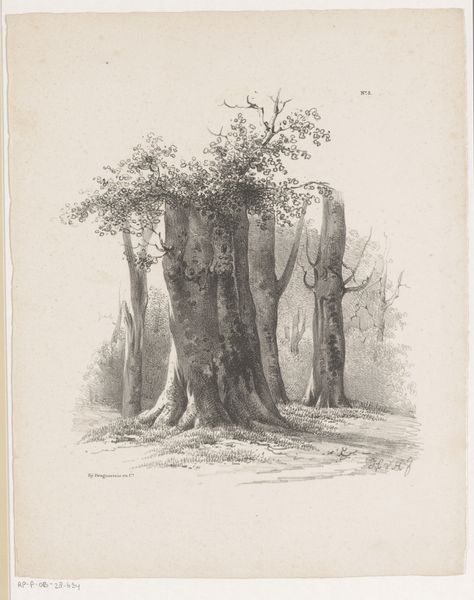
Dimensions: height 320 mm, width 230 mm
Copyright: Rijks Museum: Open Domain
Editor: This is "Boom bij rots," or "Tree by Rock," a pencil drawing by Carel Christiaan Antony Last, made sometime between 1834 and 1876. It feels incredibly detailed and almost photographic despite being just pencil on paper. What do you see in this piece? Curator: Structurally, I’m immediately drawn to the stark contrast between the meticulously rendered tree and the softer, almost dreamlike quality of the background. Notice how the artist uses line weight and density to create depth. The foreground boasts tight, controlled hatching, gradually dissolving into a hazy distance achieved through lighter, more dispersed marks. It's a masterful exercise in tonal variation. Editor: I see that! The way the tree’s leaves are rendered individually is so different from the suggestion of foliage in the back. Is there a reason for that choice, besides creating depth? Curator: The strategic use of line, undoubtedly. Observe the interplay between the organic, almost chaotic branching structure of the tree versus the solidity and relative immobility of the rocks. This creates a compelling visual dialogue, almost a tension between growth and permanence. The composition guides our eye from the dense texture of the leaves down the trunk and into the broader landscape. Do you agree? Editor: Yes, now that you point it out, I notice that downward movement! Thanks for illuminating how the artist plays with lines and shading to create such an effect. Curator: Consider the artwork’s delicate balance between detail and ambiguity. What have you gained from examining it through the lens of form and structure? Editor: I appreciate the interplay of elements in art differently. Now I feel that I can look for contrasting and consistent elements on my own.
Comments
No comments
Be the first to comment and join the conversation on the ultimate creative platform.
